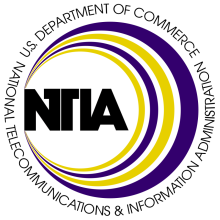
Fast, affordable Internet access for all.

The window to request an unprecedented amount of federal funds to support state broadband grant programs is now open for business.
On Friday the 13th, the U.S. Commerce Department’s National Telecommunications and Information Administration (NTIA) officially announced the Notice of Funding Opportunity (NOFO) for the $42.5 billion Broadband Equity Access & Deployment (BEAD) program.
The BEAD program, which is part of the Infrastructure Investment and Jobs Act (IIJA) that was passed in November 2021, represents the single largest federal investment in broadband expansion in U.S. history. The program, according to NTIA’s own definition, is designed to allocate the funds to all 50 states (U.S. territories and Tribal governments) to support “projects that help expand high-speed Internet access … (through) infrastructure deployment, mapping, and adoption. This includes planning and capacity-building in state offices. And it supports outreach and coordination with local communities.”
The Application Process Has Begun
We have documented and discussed the BEAD program on numerous occasions, which you can find here. But the big news that comes with the NOFO release are the application deadlines associated with it.
States have until July 18 to submit their Letter of Intent (LOI), a required first step for states to receive a minimum of $100 million in BEAD funds. (States will be allocated additional funding based on a formula that takes into account how many unserved households are in each state).
According to the BEAD application guidelines released with the NOFO, the LOI must include:
The next step is for states to submit their requests for Initial Planning Funds through the NTIA online portal. The deadline for that – which provides states with up to $5 million in funds to support state broadband offices in the collection of broadband coverage data, outreach, asset mapping, employee training and other “pre-planning activities” – is August 15.
This part of the application process requires that states, U.S. territories, and Tribal governments submit the following:
A narrative project summary, an overview of the proposed project, including activities and intended outcomes associated with the project. The project summary should include an overview of how the applicant intends to use awarded funds, including indicating partners or subrecipients who may support the applicant to execute the funded activities. Applicants should provide a clear and compelling description of the project and should be clear about the project’s intended benefits—for example, outlining how the project will advance the objectives of the BEAD program as well as specific objectives outlined in the NOFO for Initial Planning Funds and Five-Year Action Plan.
Additionally, BEAD applicants are also required to submit a form that discloses any and all lobbying activities and certify “that Federal funds have not been used and will not be used for lobbying in connection with this request for Federal financial assistance.”
Two additional NOFOs
In addition to the BEAD NOFO, the NTIA also released two other NOFOs: the Middle Mile Broadband Infrastructure Grant (MMG) Program and the State Digital Equity Planning Grant Program, which is part of the Digital Equity Act (DEA) in the IIJA.
The Middle Mile program allocates $980 million to fund “the construction, improvement, or acquisition of middle mile infrastructure. The purpose of the grant program is to expand and extend middle mile infrastructure to reduce the cost of connecting areas that are unserved or underserved to the Internet backbone.”
Meanwhile, the State Digital Equity Planning Grant Program will provide $60 million to be dispersed to applicants “to promote the achievement of digital equity, support digital inclusion activities, and build capacity for efforts by States relating to the adoption of broadband by residents of those States.”
BEAD and Digital Equity Act Work in Tandem
The various programs are designed to work in unison, as explained by a National Digital Inclusion Alliance’s analysis, which notes how “NTIA views the BEAD and DEA programs to be ‘holistically under a singular, unified objective of closing the digital divide.’”
According to the NOFO, the BEAD 5-Year Action Plans must fully incorporate the State Digital Equity Plans and that those plans should be informed by and be complementary, sequenced, integrated, and intentionally linked to each other.
To link the plans, the NOFO says, states should:
Key Takeaways
A few key takeaways: as expected the NOFO prioritizes projects aimed first at deploying new or expanded networks in unserved areas (those areas that lack access to broadband at minimum download and upload speeds of 25/3 Megabits per second), followed by underserved areas (areas that lack access to broadband of 100/20 Megabits per second); and connecting Community Anchor Institutions that do not yet have gigabit service.
And while the NOFO specifically says that state plans must “ensure the participation of non-traditional broadband providers (such as municipalities or political subdivisions, cooperatives, non-profits, Tribal Governments, and utilities),” as the American Association for Public Broadband noted, “the NOFOs stopped short of requiring the reversal of bans on municipal networks in 18 states.”

So it is not clear to us whether the NTIA will ultimately reject the BEAD applications of those states with preemption laws that either outright ban or erect barriers to municipal broadband proposals if those states don’t provide enough explanation in their plan.
However, the specific language in the NOFO suggests that states that transgress the spirit, if not the letter, of the IIJA, and states that try to lock out publicly-owned projects, risk losing out on BEAD funding.
Some laws of Eligible Entities concerning broadband, utility services, or similar subjects that predate the enactment of the Infrastructure Act may either preclude certain public sector providers from participation in the subgrant competition or may impose specific requirements on public sector entities, such as limitations on the sources of financing, the required imputation of costs not actually incurred by the public sector entity, or restrictions on the service a public sector entity can offer. NTIA strongly encourages Eligible Entities to waive all such laws for purposes of the Program. If an Eligible Entity does not do so, the Eligible Entity must identify all such laws in its Initial Proposal and describe how the laws will be applied in connection with the competition for subgrants. Such Eligible Entity must, in its Final Proposal, disclose each unsuccessful application affected by such laws and describe how those laws impacted the decision to deny the application.
The NOFO outlines NTIA’s position that local governments are key players in the deployment of BEAD funding and should be treated by the states as such:
NTIA views strong involvement between Eligible Entities and local and Tribal communities as key to ensuring that the broadband needs of all unserved and underserved locations and underrepresented communities are accounted for in Initial and Final Plans. Local coordination promotes alignment of priorities between Eligible Entity and local and Tribal officials and helps ensure visibility of local needs and preferences.
Eligible Entity is required to coordinate with political subdivisions, Tribal Governments, local and community-based organizations, and unions and worker organizations within its territory to ensure full representation and inclusion of unserved, underserved, and underrepresented communities throughout the planning and deployment processes.
And, we should also note the initial takeaways broadband policy expert Doug Dawson wrote about in a recent blog post, particularly two cautionary flags:
The Grants Are Complicated. When I started to make a full list of all of the grant requirements suggested by the NOFO, I realized that these are going to be the most complicated broadband grants ever – more complicated even than ReConnect grants. It looks like the NTIA made a list of everything that could possibly go wrong with a project or an ISP and made each into a grant requirement.
And when it comes to state broadband offices navigating the program requirements, Dawson added:
This is Going to Overwhelm State Broadband Offices. Remember that these grants are going to be administered by fifty separate grant offices. The complexity of the grant rules will overwhelm most state grant offices, which are often newly staffed. I think the NTIA thinks all of the extra requirements will make it less likely to make bad grant awards. I expect the complexity will do the opposite since inexperienced reviewers will have trouble distinguishing the few requirements that really matter from the many that are peripheral.
In any case, the bottom line with the NOFO release is that the time has come for states to have their broadband offices up and running, working with state and local leaders in formulating a robust and detailed state broadband plan. States that are not prepared to hit the ground running now that the application window is open risk losing out on a minimum of $100 million in federal funds to expand broadband access and blow a once-in-a-generation opportunity to solve the digital divide in their respective states.
Inline image of red flag courtesy of Wikimedia Commons, Attribution-ShareAlike 3.0 Unported (CC BY-SA 3.0)
